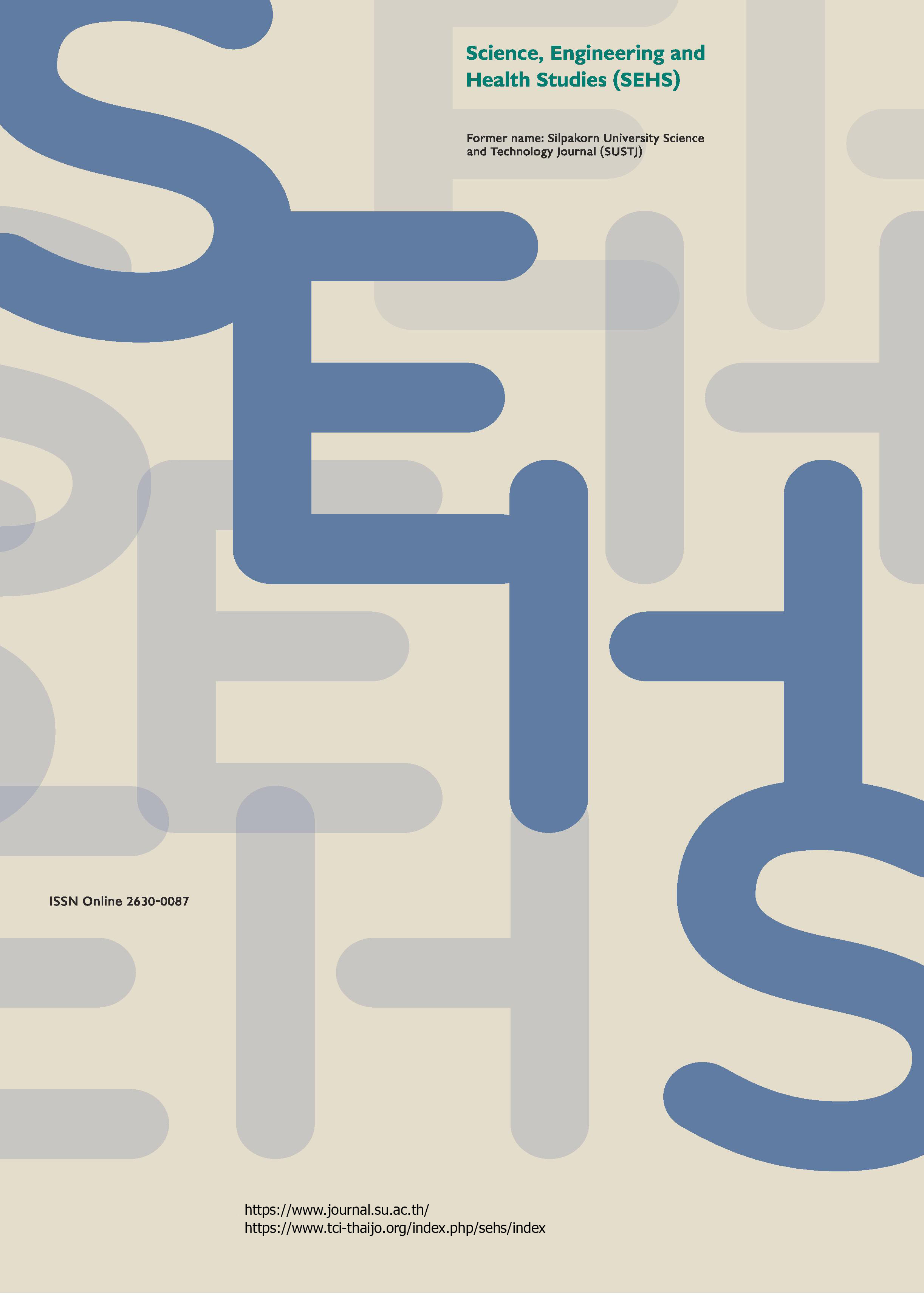Streptokinase and premedication strategies: Incidence of type I hypersensitivity reactions associated with streptokinase in clinical practice
Main Article Content
Abstract
Type I hypersensitivity reactions are observed following the administration of streptokinase, resulting in poor outcomes and increased mortality. Premedication serves as a strategy to prevent these reactions in clinical practice. This study aimed to determine the incidence of type I hypersensitivity reactions associated with patients who received streptokinase and premedication. This retrospective descriptive study collected data from the electronic medical records of Nakhon Pathom Hospital covering the period from January 1, 2019 to July 31, 2021. Seventy-four participants were identified. The incidence of type I hypersensitivity reactions was 459 cases/1,000 patients. The most common type I hypersensitivity reaction was hypotension, followed by anaphylactic shock and respiratory complications. All patients with hypotension fully recovered with appropriate management; however, all patients experiencing anaphylactic shock did not survive. An inferior wall infarction was significantly associated with these reactions. In conclusion, type I hypersensitivity reactions occurred despite the administration of premedication in patients who received streptokinase. Healthcare professionals should closely monitor and carefully manage these cases for desirable clinical outcomes.
Downloads
Article Details

This work is licensed under a Creative Commons Attribution-NonCommercial-NoDerivatives 4.0 International License.
References
Aydin, F., Yildirim, O. T., Dagtekin, E., Aydin, A. H., and Aksit, E. (2018). Acute inferior myocardial infarction caused by lightning strike. Prehospital and Disaster Medicine, 33(6), 658–659.
Bednarczyk, E. M., Sherlock, S. C., Farah, M. G., and Green, J. A. (1989). Anaphylactic reaction to streptokinase with first exposure: case report and review of the literature. DICP: The Annals of Pharmacotherapy, 23(11), 869–872.
Betancourt, B. Y., Marrero-Miragaya, M. A., Jiménez-López, G., Valenzuela-Silva, C., García-Iglesias, E., Hernández-Bernal, F., Debesa-García, F., González-López, T., Alvarez-Falcón, L., López-Saura, P. A., and the Cuban National Network of Pharmacoepidemiology. (2005). Pharmacovigilance program to monitor adverse reactions of recombinant streptokinase in acute myocardial infarction. BMC Clinical Pharmacology, 5(1), 5.
Brogden, R. N., Speight, T. M., and Avery, G. S. (1973). Streptokinase: A review of its clinical pharmacology, mechanism of action and therapeutic uses. Drugs, 5(5), 357–445.
Chiasakul, T., and Bauer, K. A. (2020). Thrombolytic therapy in acute venous thromboembolism. Hematology-American Society of Hematology Education Program, 2020(1), 612–618.
Davies, K. A., Mathieson, P., Winearls, C. G., Rees, A. J., and Walport, M. J. (1990). Serum sickness and acute renal failure after streptokinase therapy for myocardial infarction. Clinical and Experimental Immunology, 80(1), 83–88.
Duangmee, K., Boonmuang, P., Santimaleeworagun, W., and Prasitdumrong, H. (2022). Urticaria, angioedema, and type I hypersensitivity reactions associated with fibrinolytic agents. Asian Pacific Journal of Allergy and Immunology, 40(4), 379–385.
Ibanez, B., James, S., Agewall, S., Antunes, M. J., Bucciarelli-Ducci, C., Bueno, H., Caforio, A. L. P., Crea, F., Goudevenos, J. A., Halvorsen, S., Hindricks, G., Kastrati, A., Lenzen, M. J., Prescott, E., Roffi, M., Valgimigli, M., Varenhorst, C., Vranckx, P., Widimský, P., and ESC Scientific Document Group. (2018). 2017 ESC Guidelines for the management of acute myocardial infarction in patients presenting with ST-segment elevation: The Task Force for the management of acute myocardial infarction in patients presenting with ST-segment elevation of the European Society of Cardiology (ESC). European Heart Journal, 39(2), 119–177.
International Collaborative Study of Severe Anaphylaxis. (2003). Risk of anaphylaxis in a hospital population in relation to the use of various drugs: An international study. Pharmacoepidemiology and Drug Safety, 12(3), 195–202.
ISIS-2 (Second International Study of Infarct Survival) Collaborative Group1). (1988). Randomised trial of intravenous streptokinase, oral aspirin, both, or neither among 17,187 cases of suspected acute myocardial infarction: ISIS-2. The Lancet, 332(8607), 349–360.
Khalid, K., Ahmad, R. E., Y.H. Tong, A. Y. H., Lui, S. Y., and Abidin, I. Z. Z. (2021). Pathophysiology of streptokinase-induced hypotension in acute myocardial infarction: A systematic review of clinical evidence. Archives of Medical Sciences. Atherosclerotic Diseases, 6, e85–e94.
Lew, A. S., Laramee, P., Cercek, B., Shah, P. K., and Ganz, W. (1985). The hypotensive effect of intravenous streptokinase in patients with acute myocardial infarction. Circulation, 72(6), 1321–1326.
Ngamjarus, C. (2016). n4Studies: Sample size calculation for an epidemiological study on a smart device. Siriraj Medical Journal, 68(3), 160–170.
O’Gara, P. T., Kushner, F. G., Ascheim, D. D., Casey, D. E., Jr, Chung, M. K., de Lemos, J. A., Ettinger, S. M., Fang, J. C., Fesmire F. M., Franklin, B. A., Granger, C. B., Krumholz, H. M., Linderbaum, J. A., Morrow, D. A., Newby, L. K., Ornato, J. P., Ou, N., Radford, M. J., Tamis-Holland, J. E.,… Zhao, D. X. (2013). 2013 ACCF/AHA guideline for the management of ST-elevation myocardial infarction: A report of the American College of Cardiology Foundation/American Heart Association Task Force on Practice Guidelines. Journal of the American College of Cardiology, 61(4), e78–e140.
Ondrus, T., Kanovsky, J., Novotny, T., Andrsova, I., Spinar, J., and Kala, P. (2013). Right ventricular myocardial infarction: From pathophysiology to prognosis. Experimental and Clinical Cardiology, 18(1), 27–30.
Prasitdumrong, H., Duangmee, K., Boonmuang, P., Santimaleeworagun, W., Oppamayun, Y., Sonsupap, C., and Nakkaratniyom, T. (2023). Incidence of urticaria, angioedema, and type I hypersensitivity reactions associated with fibrinolytic agents in Thailand using the database of the health product vigilance center. Asian Pacific Journal of Allergy and Immunology, 41(1), 67–72.
Ruenroengbun, N., Kongsuwan, K., Dokkaewklang, M., Lakkasorn, A., Ardsean, A., Srimanee, P., Kanchanakomala, N., and Duangmee, K. (2024). Incidence and factors associated with bleeding in patients receiving concomitant fibrinolytic agents and corticosteroids therapy. Thai Bulletin of Pharmaceutical Sciences, 19(1), 53–65. [in Thai]
Tisdale, J. E., Colucci, R. D., Ujhelyi, M. R., Kluger, J., Fieldman, A., and Chow, M. S. (1992). Evaluation and comparison of the adverse effects of streptokinase and alteplase. Pharmacotherapy, 12(6), 440–444.


